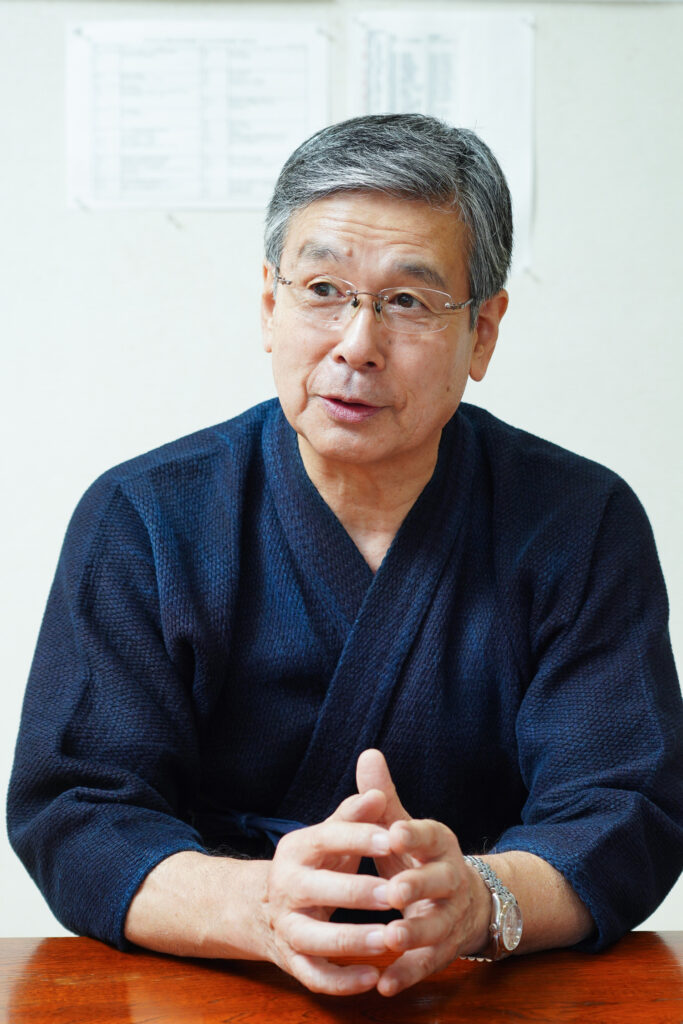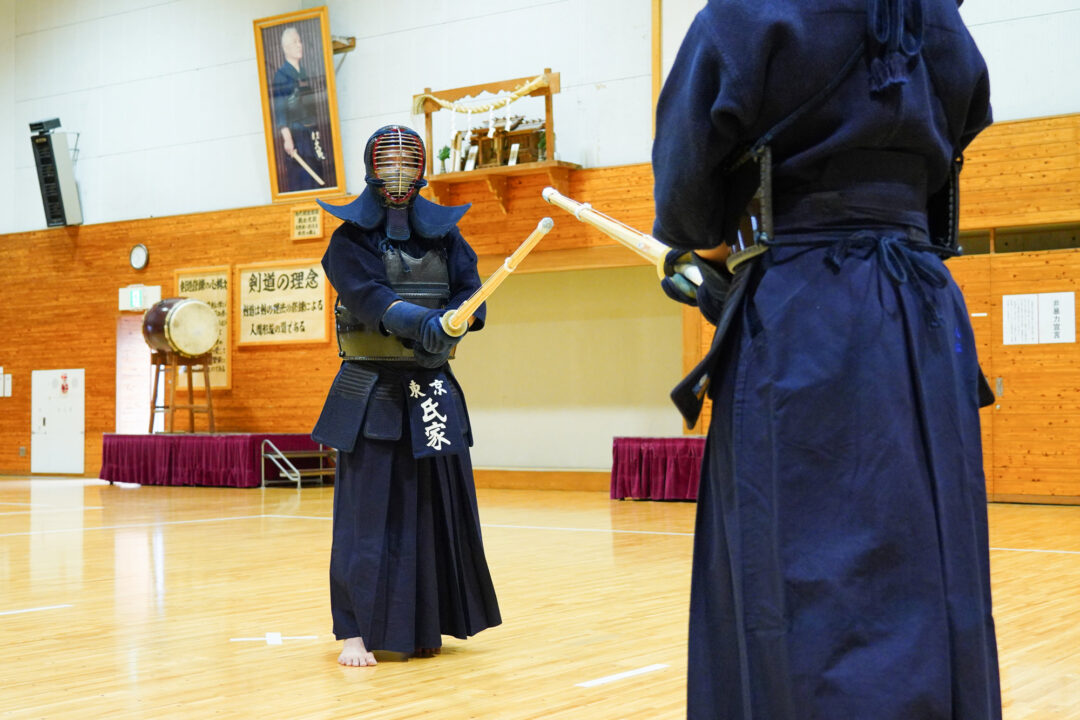KENDOJIDAI 2021.12
Planning: Teraoka Tomoyuki
Photography: Sasai Takamasa
Translation: Anne Zwart
Ujiie Michio told us that in order to make the opponent move, you must not move yourself.
We interviewed Ujiie-sensei to find out the truth behind this enigmatic Kendo teaching. He explains his idea of the ideal Seme and setup that can move your opponent.
Ujiie Michio, Hanshi 8th Dan

Attended Miyagi Kogotanourin High School, went on to Kokushikan University and continued his research there. Worked as the Kendo club coach before taking on the role of club director in 2005.
Some of his notable achievements are third place in the All Japan KENDO Championships, becoming a national team member for the World Kendo Championships, first place in the All Japan KENDO Instructor Championships, and second place in the All Japan KENDO 8-DAN Tournament among others. Professor in the Budo Studies department of Kokushikan University.
The theme for this article is “making the other move and strike.” If you can confidently say you have mastered this skill, I don’t think there is anything left for you to learn in Kendo. I myself try to work on making the other move for me during Keiko as well, but it is always a challenge.
I suppose it is the same concept as “win, then strike” but that is probably one of the most difficult things to achieve in Kendo.
The ability to move the opponent on your terms means you have control in any given situation; you are free to make them do anything to your advantage. Naturally, this is an exceptionally good position to be in as a Kenshi.
However, gaining this much control over the other is like the holy grail to Kenshi. Earlier, I said that you can probably quit Kendo if you master the art of making someone move for you; this is because I know it is impossible to learn as a concrete and reliable skill.
Still, in my Tachiai so far, I have had moments where I could feel I was in control of the other. I have also scored Ippon because of it.
However, managing to do this once does not mean that it will happen the same way next time. This is because the total process in which I took control happened almost entirely subconsciously.
In order to grasp how to make the other move, repeating the subconscious steps you take in your Kendo is very important. Over time, the steps will become natural and conscious to you; this allows your body to move the way it needs to on its own, even in your subconscious.
Whenever you have a very concrete plan in a Tachiai to force a certain opening a certain way, you are obstructing yourself from actually creating an opening.
When I practice with students, I notice that some move in response to a certain kind of Seme while others do not. No two opponents are the same, so there are infinite ways of making them move. This means that within these infinite approaches, I find the one that suits me and my personal steps the best and use it to move my opponent as I need.
From constantly aggressive Kendo to Kendo that draws the opponent out
The rest of this article is only available for Kendo Jidai International subscribers!


